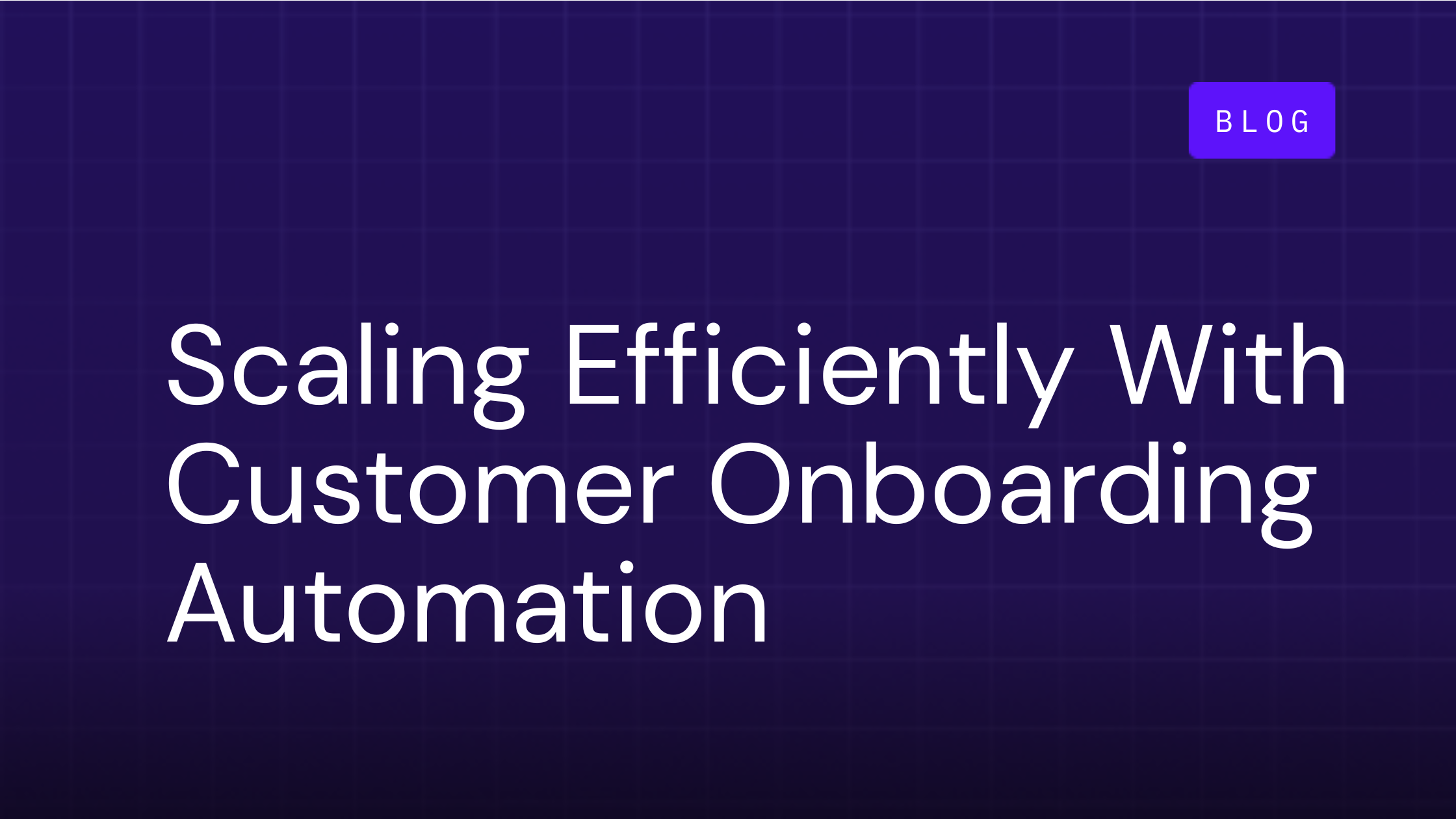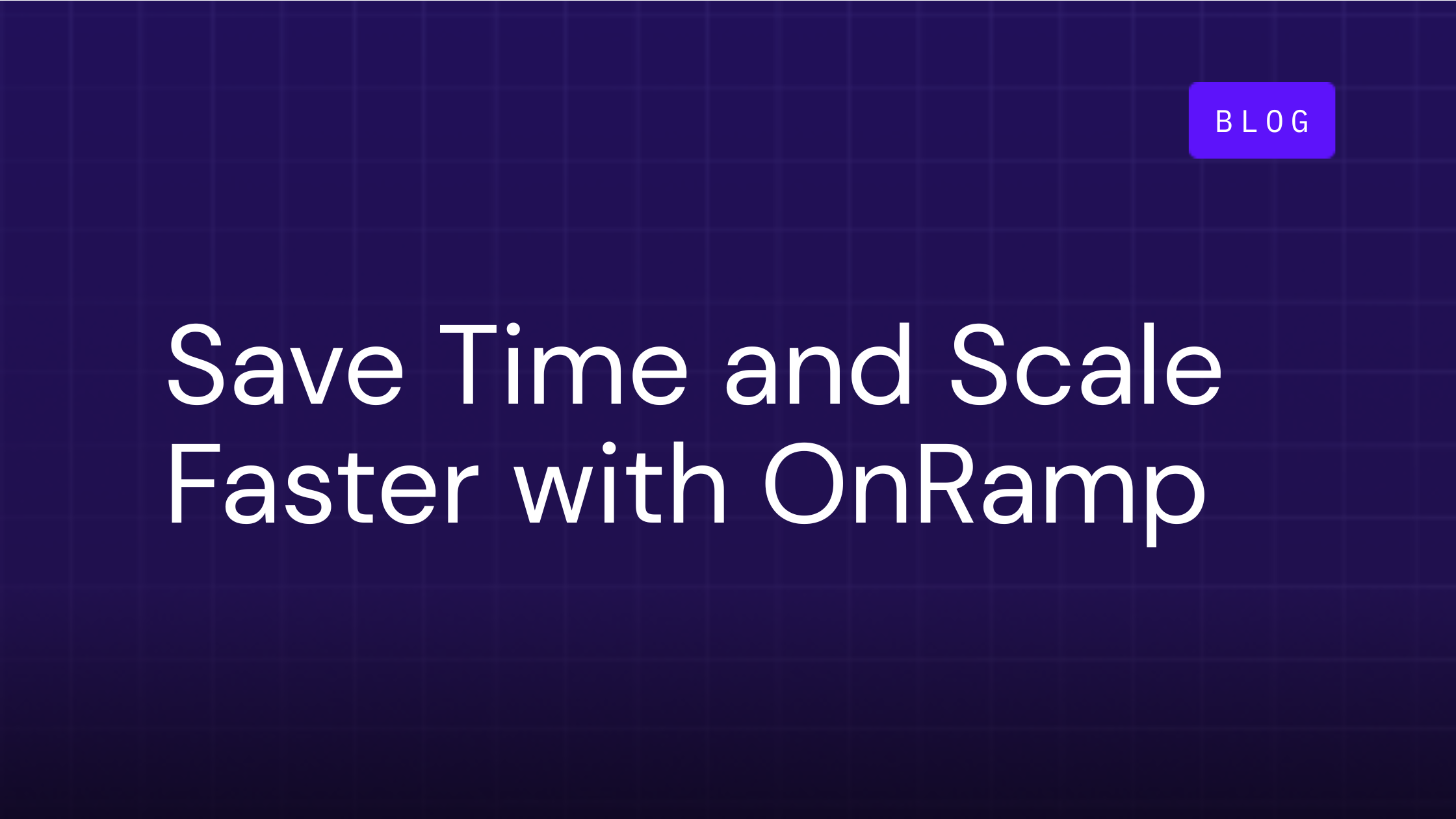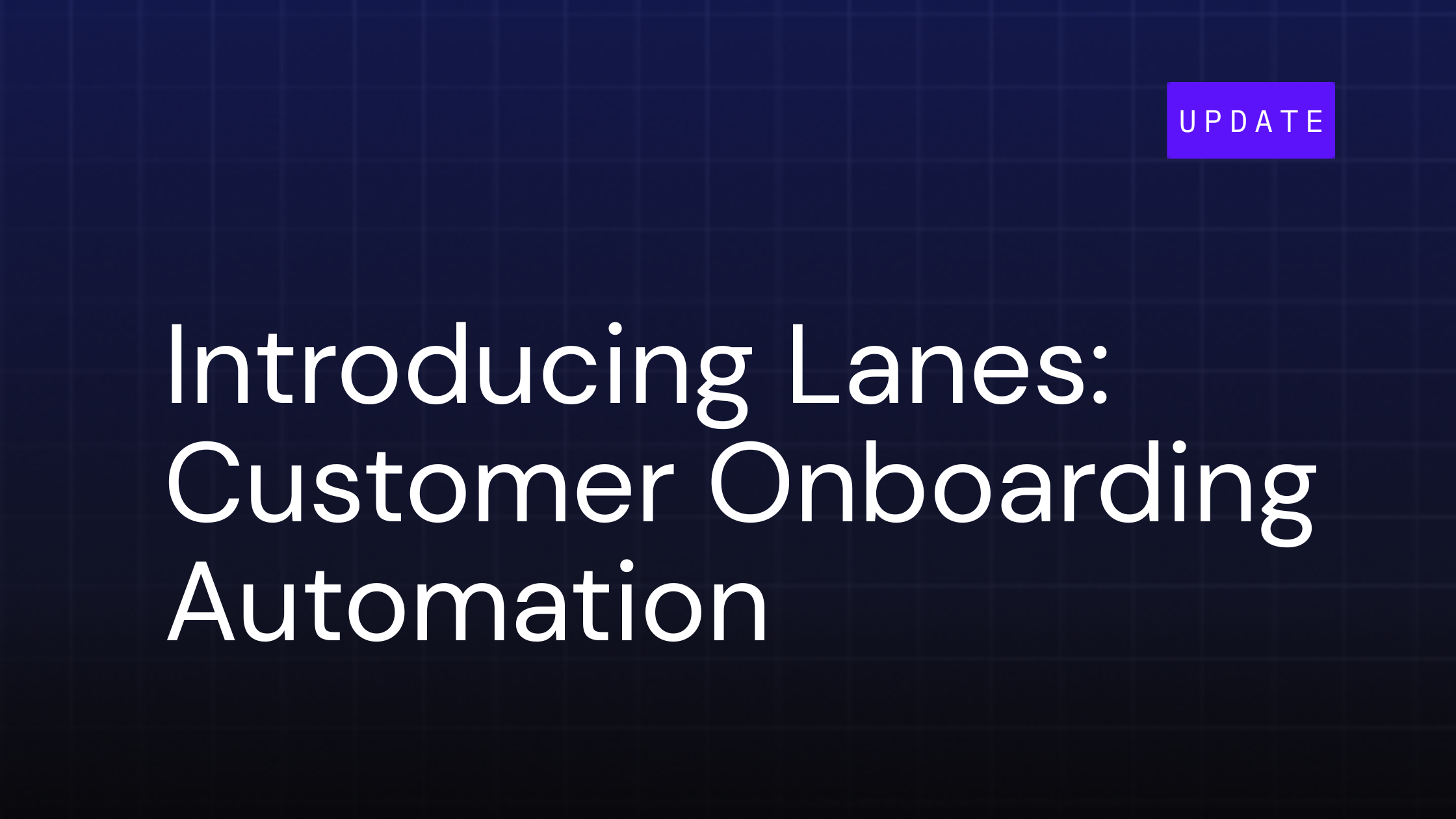How To Scale Efficiently With Customer Onboarding Automation

Table of Contents
Technology powered by artificial intelligence (AI) is all the buzz in every industry this year. In 2025, we expect automation to go from being a nice-to-have to a must-have for software as a service (SaaS) businesses.
As businesses struggle with resource constraints like limited staff and budgets, causing customer satisfaction and retention to drop, automation tools have become more important than ever.
Customer onboarding automation tools allow companies to close leads, onboard customers and manage accounts without any manual (human) intervention, saving time, effort, and resources.
Yet, choosing the right AI-powered tools to automate onboarding and keeping up with the competition is no easy feat. Many customer success leaders are hesitant to adopt automated customer onboarding, fearing they may lose the critical human touch that made them what they are in customer’s eyes.
But, what if you could have both? What if onboarding automation tools could optimize onboarding while helping you preserve your personalized approach and strong relationships at scale?
Learn more about what customer onboarding automation really does for businesses like yours and how to implement it effectively as you grow.
What Is Customer Onboarding Automation?
Customer onboarding automation leverages technology and digital tools to automate repetitive tasks like data entry, sending reminder emails, form filling, and document processing.
Traditional customer onboarding involves manual processes like inputting data into spreadsheets and sending notifications through email that introduce the customer to your product or service.
Teams no longer need to send emails individually or schedule calls and log events in a calendar manually. Onboarding automation tools can handle these tasks to save time and reduce the chance of human error.
Here are a few areas of automated onboarding that make a big impact for busy, resource-constrained customer success teams:
- Data collection and entry
- Workflows and task management
- Document processing
- Follow-up and progress tracking
But how do you automate onboarding?
You need digital customer onboarding software to integrate automation into your current systems. Tools like OnRamp provide a client portal that allows customers to access their information and complete onboarding tasks like filling out forms or completing training sessions.
Why Automate Your Onboarding Process?
More customers means more work to onboard and secure long-term relationships that, ultimately, reduce churn and increase retention. While relying on your employees to handle all these interactions can be more cost-efficient when your business is small, it may quickly become the bottleneck to growth when your customer base expands.
Many companies face a series of challenges when manually onboarding, such as:
- Human errors: When employees process large amounts of data manually, it's easy to misplace documents, make typos, and miss critical information.
- Time-consuming processes: Manually collecting customer information, scheduling meetings, or following up on incomplete steps can drain hours from your team’s day.
- Inconsistent customer experience: Too many people handling the customer experience will lead to inconsistent quality of service.
According to a study, 84% of customer service experts report that automation simplifies the ticket response process. Adding onboarding automation reduces human errors and leads to increased accuracy. The automated onboarding process becomes simpler and customers receive value quicker, enticing them to stay with your service longer.
Overall, customers are more satisfied with personalized services. And with OnRamp's automated workflows, teams can customize onboardings with conditional logic and adjust task flows based on customer behavior in just a few simple steps.
Core Features of Automated Customer Onboarding Software
While your team's exact onboarding process will depend on the industry and service you provide, most customer service teams require a few core features within an onboarding tool.
Here is a detailed breakdown of the features you should look for in your automated onboarding software:
- Workflow automation: Workflows create a sequence of steps that guide customers through the onboarding process. Automation takes care of repetitive steps like follow-up emails or contract signings so your team doesn't have to take care of everything manually.
- Automated notifications and reminders: Customers may forget to complete a task or miss follow-up emails since the onboarding process contains many moving parts. Automated reminders and notifications send timely alerts for clients to complete actions like document submission or meeting scheduling to keep the process moving.
- Self-service portals: Self-service portals allow customers to access resources and complete onboarding steps independently. This reduces the dependency on your team to take all the action, and customers feel more in control of their success with the service or product.
- Data collection and syncing: The best onboarding automation software collects customer information automatically and centralizes it for your team to access at any time. Once customers enter their data into your software, it shows up automatically in your customer relationship management (CRM) platform.
- Integration with CRMs and other tools: You want your onboarding software to integrate with all your existing external tools. You make customer data readily available and consistent by syncing data across all your tools.
Steps to Automate the Onboarding Process
Before moving forward with automated software, create a plan for aligning the software with your company's goals.
These seven steps will help you create a seamless automated onboarding experience:
- Define customer goals: Start by setting clear goals for what you want to achieve with your onboarding process, like reducing time to activation or minimizing support requests.
- Map out the customer journey: Outline the entire onboarding journey and identify key touch points like account setup or product training.
- Identify manual pain points: Examine repetitive tasks or bottlenecks in the onboarding journey like sending welcome emails or collecting customer data to understand where automation can have the biggest impact.
- Choose the right software: You'll recognize the right software when it includes features that fit the needs and goals you outlined in the previous steps and the core features mentioned in the previous section.
- Craft onboarding workflows: Once you choose the software, create workflows within the platform that automate the most repetitive tasks in each step of your customer journey.
- Train your team: Conduct training sessions to demonstrate how to use the software, manage workflows, and troubleshoot common issues to reduce implementation time.
- Test, iterate, and optimize: Roll the software out to a small group of customers to identify any gaps or issues. Gather feedback and refine workflows as needed.
To consistently revise your process, develop automated feedback loops by setting up customer input forms at various onboarding stages.
The Role of Automated Onboarding
Automated onboarding uses technology to collect, track, and organize customer data during the onboarding process without manual effort. Not only is the process more efficient for your team but it reduces errors to keep the data more accurate for future use.
Companies in the SaaS industry can use data automation tools to collect information on customers' preferences. For example, CRM software might use automated onboarding to ask new customers to upload their logo, company information, and team member details in a streamlined, step-by-step process.
Other companies that collect sensitive information, like those in the Fintech industry, can collect and verify bank account details, income verification, and identification documents without draining employee resources. Companies can use digital lenders to automate a request and validation system for loan applications instead of sending emails back and forth for weeks.
An automated data-collecting process simplifies the initial steps of customer onboarding to ensure accurate information throughout the customer journey. Your company will save time while simultaneously tailoring each customer's onboarding experience.
Best Practices to Automate Client Onboarding
Successfully adding an automated client onboarding tool requires more than just implementing the software. You need thoughtful strategies that enhance the entire customer journey.
Here are some best practices that will give you a head start on your competitors:
- Personalize the automated experience: The data you collect on your customers can be automatically added to communications to tailor the experience. Information like a customer's name, company, or specific issues can all be included in personalized emails, targeted welcome content, or automated follow-up messages.
- Set expectations early: From the very first touchpoint, clearly outline to customers what they can expect from the onboarding experience and the steps needed to complete the process. Provide timelines and highlight any key milestones like account setup or training sessions to limit confusion and keep customers engaged.
- Automate customer education and training: Create video tutorials, knowledge base articles, and interactive guides and automatically offer them to customers throughout their onboarding experience. With the right tools like OnRamp, these materials are triggered based on customer actions like when they complete account setup.
- Review and update the process: Your automation tool will need consistent reviews and updates to remain effective. Gather feedback from your customers and your employees to gauge what areas need improvement. Update workflows, refine your messaging, and add new resources when needed.
Look at companies like Flosum and Parkhub to get real examples of how to automate the customer onboarding experience. They use personalized welcome messages, automatic schedulers, and automated follow-ups to build better relationships with potential customers.
Challenges and Solutions in Onboarding Automation
Learning how to automate the onboarding process brings a series of challenges that could set your team back weeks or months if you don't prepare correctly.
Below are some of the most common challenges companies face when implementing a new onboarding tool and the solutions to keep the process efficient.
System Integration
Creating an effortless customer journey, where there are few obstacles for onboarding, relies heavily on integrating your automation tool with all your other internal tools. Software like CRMs, billing systems, and communication platforms can create data silos. They can cause team misalignments and issues that result in inconsistent customer messaging.
A tool like OnRamp includes integrations with the most popular platforms to enable a smooth data flow between all systems. All your customer data is easily accessible in one centralized location.
Maintaining a Personal Touch
Automation will lose the personal touch of human interaction because it tries to create standardized processes at scale. Customers will recognize they are interacting with a machine rather than a person who understands their unique needs.
To maintain a personalized approach, add dynamic content in emails or follow-up messages that fill in the customer's name or personal information. You could also use automatic segmentation to create relevant marketing materials that feel more personal to the customer.
Scaling With Quality
Another common issue when integrating an automatic onboarding system is scaling operations while maintaining a high-quality level. As customers grow, making every onboarding experience consistent and effective is difficult. This is where automatic workflows become necessary.
Workflows let you outline each customer journey step in an onboarding tool and automate most of the process. Team members can regularly review and optimize the workflows as the company grows to keep the level of customer service high.
The Future of Onboarding Automation
AI and machine learning are the most significant forces shaping the future of onboarding automation. Automated onboarding makes the process faster, smarter, and more personalized for all businesses.
Predictive onboarding is one of the benefits of AI technology. It analyzes customer behavior to anticipate needs and tailor the onboarding journey. If a customer frequently accesses certain features, the system will offer specific tutorials that are relevant to those features.
Another trend emerging in onboarding automation is self-service onboarding. In this model, customers can manage their onboarding experience at their own pace. All information is accessible when needed, and there is no need for direct support.
How OnRamp Can Help You Automate Customer Onboarding
OnRamp makes automating customer onboarding simple and efficient with its dynamic, no-code project workflows. Anyone on the team can easily build and customize workflows using a comprehensive task library. All decisions and actions that would typically be manual become automated based on specific customer triggers.
OnRamp also allows you to construct any workflow into reusable playbooks so you can call on them again and again for consistency while scaling. For example, you can create a playbook that automatically guides new customers through account setup, product training, and initial feedback collection. If you need to adapt the process for a specific customer segment, you can make modifications with just a few clicks.
When you automate customer onboarding in key areas, such as data collection, workflows, and initial setup, you create a consistent customer journey that increases customer satisfaction and improves efficiency. This process is only possible by exploring customer onboarding tools with AI and key features relevant to your company's goals.
Assess your current onboarding setup and consider how automation can be a key strategy for scaling your business and delivering a seamless, high-quality experience to every new customer.
Related Posts:

Save Time and Scale Faster, While Keeping a Personal Touch with OnRamp
At OnRamp, we know that onboarding isn’t just about checking boxes. It’s the moment of truth that makes or breaks long-term customer...

Introducing Lanes: A New Era for Customer Onboarding Automation
Introducing OnRamp Lanes: a powerful automation feature that visually organizes and maps your entire customer onboarding workflow in...

The 7 Most Common Customer Onboarding Mistakes & How to Fix Them
Your sales team pulled out the stops to close your newest logo. Now, it's time for your customer onboarding team to introduce your...